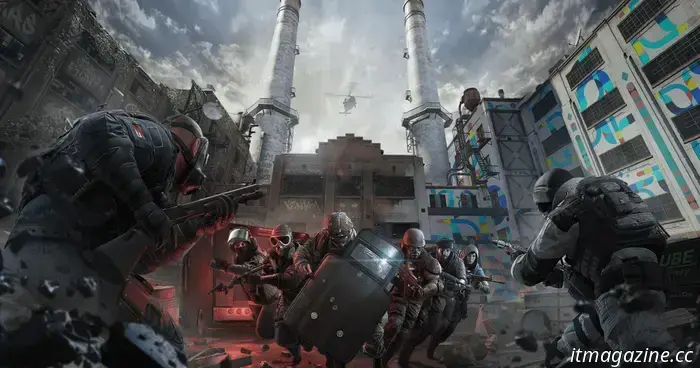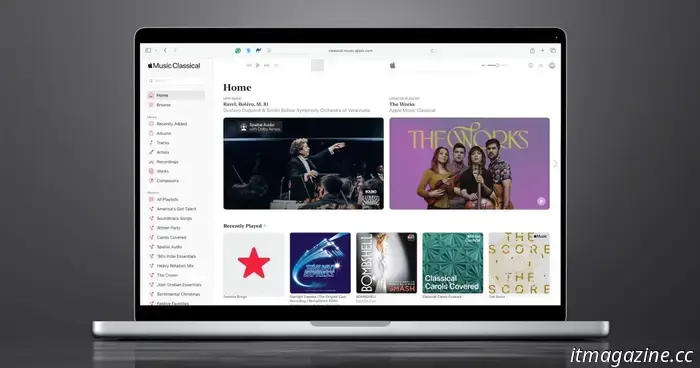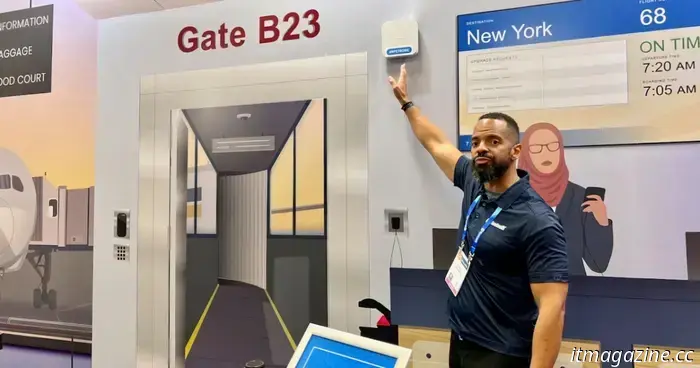
The new mode in Rainbow Six Siege X is ideal for beginners such as myself.
Tom Clancy's Rainbow Six Siege, launched in 2015, has surprisingly remained popular as a live-service title. Approaching its 10th anniversary, the game is set to undergo a revamp called Rainbow Six Siege X. This update will feature new content, improved graphics, and a novel game mode named Dual Front, which significantly alters the conventional Siege gameplay.
As someone with limited prior experience in Rainbow Six Siege, I was astounded by how accessible the new mode is for newcomers. Despite my lack of familiarity with the game, I managed to compete effectively against other players during a three-hour demo, aided by the mode's innovative mechanics. In a conversation with game director Joshua Mills, I gained further insight into what Siege X has to offer, how Dual Front is designed for new players, and the reasons behind not pursuing a direct sequel.
Switching It Up
Dual Front is a fresh 6v6 game mode where two teams fight for control over different zones. Both teams are engaging in offense and defense simultaneously, attempting to capture the enemy's zones while safeguarding their own from capture. This represents a shift from the traditional Siege multiplayer format.
In the regular Siege rounds, players are divided into two teams with clearly defined roles: one team attacks, while the other defends. The attackers typically aim to rescue a hostage or defuse a bomb, while the defenders focus on protecting the hostage or the bomb. Players select from characters known as Operators, categorized into attackers and defenders.
In this new mode, however, teams can now include a mix of both types of Operators. This alteration allows for entirely new team dynamics. For instance, the attacker Deimos can now team up with the defender Azami. While their individual abilities were initially tailored to their respective roles, players can now experiment with them uniquely in Dual Front. Deimos’s Deathmark Tracker, which reveals the location of a selected target and his own, can now be effectively utilized defensively, such as tracking an escaping enemy while defending a zone. The team has an interesting approach by limiting the operator selection, planning to rotate characters regularly to enhance accessibility for new players.
“A smaller roster allows people to focus. It simplifies the learning process regarding different operators since players won't be overwhelmed by the extensive operator roster at once,” Mills shared with Digital Trends.
Two significant changes further enhance Dual Front’s approachability. While traditional multiplayer modes in Siege are typically 5v5, Dual Front adopts a 6v6 format. Moreover, respawning is allowed in Dual Front, whereas it is absent in other modes. A 6v6 structure is generally less stressful than a 5v5 one, making comebacks easier from a 5v6 deficit compared to a 4v5. Respawning gives players more chances to improve and reduces the burden from teammates.
“The social pressure in a 5v5 match is tremendous when one player is eliminated, shifting it to a 4v5. In that situation, the remaining players hold a significant advantage,” Mills noted. “With respawning occurring after 30 seconds, players aren’t hit with the immediate discouragement of feeling like they’ve let their team down, as that scenario won’t unfold.”
The Next Decade of Siege
It’s remarkable that Siege has endured for a decade, given that live-service games often experience either remarkable success or severe failures. Siege X isn't merely a sequel but a “transformation.” While this description may feel ambiguous, Mills clarified the rationale behind not opting for a direct sequel.
Unlike Ubisoft’s other live-service title, The Division, which is currently in its third installment and incorporates both PvE and PvP aspects, Rainbow Six Siege focuses entirely on PvP. The development team is continuously updating Siege every three months, requiring them to maintain flexibility.
“Given that Siege is a PvP game, the players influence the experience and are integral to the game’s structure. This leads to a distinct discussion regarding how we reinvent the game,” Mills explained. “We’re addressing aspects like gun mechanics, destruction systems, and other systems we utilize. Our technical progression has aimed for a highly modular approach.”
Condensing a decade of Siege into a two-year development cycle for a sequel would be an immense challenge and likely result in a lower-quality game. “You could accomplish it, but you’d inevitably compromise in some aspect,” Mills remarked. “There are many lessons learned in ongoing development that help create sustainable methods.”
After experiencing the new mode, I then tried Siege’s traditional multiplayer gameplay and understood the reasoning behind Dual Front’s design. The absence of respawning left me disengaged once eliminated, forcing me to spectate from a teammate’s point of view. However, in Dual Front, I was continuously drawn back into the action. This new mode provided an ideal opportunity for me to experience Siege for the first time, and I am eager to return home and dive into another session of Siege X.



Other articles
 In what ways will Spider-Man 4 revamp the MCU’s web-slinger?
As Spider-Man 4 is currently in production, it prompts curiosity about how Marvel's sequel to No Way Home will influence the webslinger and his role within the MCU.
In what ways will Spider-Man 4 revamp the MCU’s web-slinger?
As Spider-Man 4 is currently in production, it prompts curiosity about how Marvel's sequel to No Way Home will influence the webslinger and his role within the MCU.
 There’s a fresh method to enjoy Apple Music Classical, along with new music releases.
You can now enjoy your preferred Apple Music Classical content directly from the web, as it moves beyond the app.
There’s a fresh method to enjoy Apple Music Classical, along with new music releases.
You can now enjoy your preferred Apple Music Classical content directly from the web, as it moves beyond the app.
 European cloud providers present an alternative to AWS, Azure, and GCP.
European cloud companies are offering an alternative to AWS, Azure, and GCP. Are the new challengers capable of competing with the hyperscalers?
European cloud providers present an alternative to AWS, Azure, and GCP.
European cloud companies are offering an alternative to AWS, Azure, and GCP. Are the new challengers capable of competing with the hyperscalers?
 Google is on the verge of completely transforming Android gaming.
Google is significantly transforming mobile gaming on Android by implementing performance optimization, ray tracing, and a variety of new additions to the library.
Google is on the verge of completely transforming Android gaming.
Google is significantly transforming mobile gaming on Android by implementing performance optimization, ray tracing, and a variety of new additions to the library.
 Daniel Craig is considering a role in Greta Gerwig's Narnia film.
James Bond may be making his way to Narnia. Reports indicate that Daniel Craig has received an offer to be part of Greta Gerwig's Narnia project at Netflix.
Daniel Craig is considering a role in Greta Gerwig's Narnia film.
James Bond may be making his way to Narnia. Reports indicate that Daniel Craig has received an offer to be part of Greta Gerwig's Narnia project at Netflix.
 Android Beta 16 from Google includes Auracast support.
The latest Android beta version introduces Auracast support for Samsung Galaxy devices running One UI 7, Android 15, and Pixel 9 devices.
Android Beta 16 from Google includes Auracast support.
The latest Android beta version introduces Auracast support for Samsung Galaxy devices running One UI 7, Android 15, and Pixel 9 devices.
The new mode in Rainbow Six Siege X is ideal for beginners such as myself.
Rainbow Six Siege X will enhance Ubisoft's popular live service game by introducing an all-new mode designed specifically for beginners.
